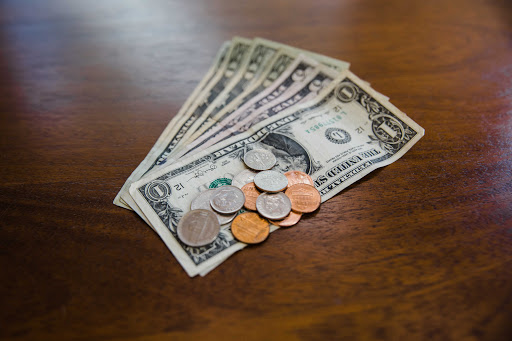Story by Sean Kirst published at rd.com
It was only a dollar. Dylan Belscher noticed it on the floor as he sat at the back of his English class at John F. Kennedy High School in Cheektowaga, New York, in March 2018.
When the school day ended, Belscher wandered back to the classroom. The wrinkled old bill was still there. He could easily have pocketed it without thinking twice.
Instead, he picked it up and brought it to his English teacher, Katie Mattison.
“It wasn’t my money,” Belscher says, which he sees as ample explanation. Mattison, 54, was a little surprised he’d turned the dollar in, knowing a lot of people would have just kept it. She suggested that Belscher tape it to the whiteboard at the front of the classroom, where she always puts lost things. Maybe the dollar was lunch money or bus fare for the student who dropped it.
“You can always tell when someone is looking for something,” Mattison says.
A day or two later, the school shut down for Easter break. Neither the teacher nor her student thought twice about the dollar. Taping it up “was just good karma,” says Belscher.
Hunter Rose, then a senior, was in English class after break when he spotted the dollar on the whiteboard. There was a mystery to it, Rose says. After class, he asked Mattison why it was there. She was still waiting for the original owner to claim it, so she replied, “I don’t know.”
Rose took the tape from Mattison’s desk and taped a second dollar to the board.
That got it rolling. The sight of the two dollar bills, side by side, triggered something in Mattison’s students. They started asking about the purpose of the money, to which Mattison always gave the same answer: She didn’t know. At that point, it was absolutely true.
More students, intrigued, taped up single dollar bills. Mattison—a veteran teacher who recognized a phenomenon in the making—wrote the initials of each student on each specific bill, and she started to leave the tape on the tray of the whiteboard.
That small gesture became a teachable moment about the power of charity.
The effort snowballed. Even with no specific purpose, many students wanted to be part of whatever this was. Jake Braniecki, another senior, says everyone understood that the eventual plan for the dollars would be for “something good” and that their teacher “wasn’t going to do anything stupid with the money.”
The students, among themselves, decided Mattison had some unspoken goal, some mysterious threshold at which she would reveal the secret. They figured bigger donations could only help them get there faster.
Braniecki taped a $20 bill and a $10 bill to the whiteboard. Megan Makowski dug into her Christmas and birthday savings and taped up another $20.
“I kept pestering her the whole time,” she said of her teacher.
The amount continued to grow over several weeks, until it reached $175.76. As for the original dollar, the person who lost it never came looking.
That left Mattison to decide upon the best resolution. She kept thinking about her brother-in-law, Jack Hains, a guy she describes as a wonderful human being who had been godfather to Mattison’s daughter, Tess.
Eight years earlier, Jack had died of amyotrophic lateral sclerosis (ALS), a rare and devastating neurological disease. Three years after that, his sister, Jean Hains Grant, died of the same condition.
Mattison told that story to all her classes. She explained that Jack had been married to her sister, Terry Stephan Hains, and that Terry raises money every spring for the ALS Therapy Development Institute, established to seek a cure for the disease. She asked the teens whether they minded if she donated the dollars in their names in honor of Jack.
Their answer was to tape enough money to the whiteboard over the next few days to push the amount to $321.06. Mattison, choking back tears as she recalls the moment, says she carefully peeled the cash off the board and made the donation just before the beginning of May, which is National ALS Awareness Month.
That was Saturday. By Monday afternoon, eight more dollars had been taped to the board.
Editor’s note: After this story was published in the Buffalo News, JFK High School graduates, Mattison’s fellow teachers, and other members of the community sent Mattison more donations. By the end of the school year, they’d raised more than $1,300. “That was a special moment in time with a special group of kids who were intrigued by the mystery of what was unfolding and wanted to be a part of it,” Mattison says.






